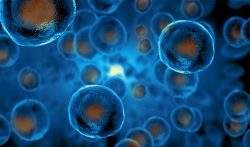 By using a mouse model, researchers from the Univ. of Copenhagen have developed an alternative route for cells to follow to build organs. They used this information to attain a stem cell that is new and could possibly generate a supply of organs.
By using a mouse model, researchers from the Univ. of Copenhagen have developed an alternative route for cells to follow to build organs. They used this information to attain a stem cell that is new and could possibly generate a supply of organs.
Currently, a stem cell is created by either employing molecules found in pluripotent cells or by placing an embryo in a dish. The process involved reprogramming differentiated cells to create induced pluripotent cells. This new research explores other avenues to make this happen.
The prospect to be able to restore organ tissue that has been damaged is exciting. Researchers are now studying how stem cells create cells of organs like the pancreas, liver, and intestine. In the past, they have tried to copy the process where embryonic cells transform into body parts including organs. Although several attempts have been made it has been very difficult to achieve the lab grown cells to correctly mature. But this new research shows there may be an important step they missed and possibly a different kind of stem cell.
Recently, there have been many studies that have tried to form a gut out of stem cells in a dish. They have now found an innovative way to do this by stem cells following a different path from what happens in an embryo. They discovered a new direction an embryo could take to make organs.
This study primarily focuses on pluripotent stem cells and endoderm extra-embryonic stem cells. A few years ago the team identified a new stem cell line called extra-embryonic stem cells. These stem cells act as key support cells in gastrointestinal organs by supplying membranes and their nourishment and other functions.
By using the alternate path the extra-embryonic stem cells can take, they have the ability to make intestinal organs in the embryo. They then took these stem cells and adapted them into structures that were intestinal organ-like in a dish. From this study, they discovered that when these support cells used this new alternate route, they would actually create organoid structures.
There are certain cells that can potentially be candidates to create organs in the digestive tract, like the pancreas, lung, liver, and intestine. The team were able to label them with a genetic marker. To do this to such a large amount of data required original and new approaches in analyzing the information. Therefore, the team collaborated with physical scientists from the Niels Bohr Institute.
They were able to identify the genes used in the cells. To further aid the work, they developed a computational tool that compared cell clusters. This was used in comparing cells in their dataset and also examine others.
To determine if this new alternate route could create organ cell types they used the extra-embryonic stem cells. They originate at a different place in the embryo then pluripotent stem cells and look like the beginning point for the alternate route for formation of an organ. They were used to develop organ-like structures in the intestines in a dish. They found that both of the routes would work. But using the alternate route could help lab-grown cells from cells that are functional and can study and treat disease.
There is still ongoing research to be done in the details of the function and maturing of these cells. Maybe by using both the traditional route and the alternative route some problems can be solved.
To view the original scientific study click below:
Identification of the central intermediate in the extra-embryonic to embryonic endoderm transition through single-cell transcriptomics





